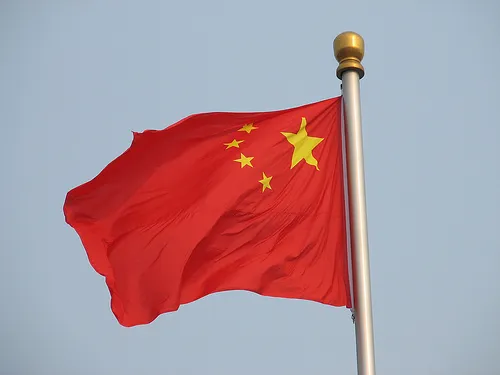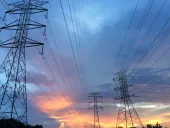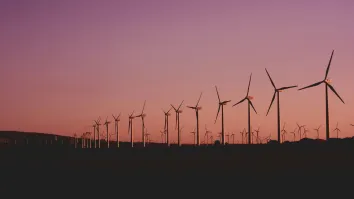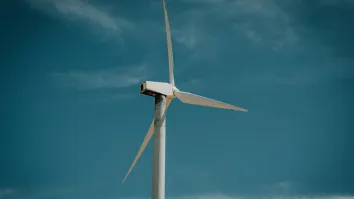
China is dead serious on its greener energy mix
It's taking a leap towards becoming the undisputed renewable powerhouse of a low carbon-consuming world.
When China recently announced that it will spend $360b over the next four years to build up its renewable energy sector, the country was making a bold statement pinning the majority of its economic hopes on the growth of this burgeoning sector. Analysts reckon this latest push for renewable energy investment comes at a critical time when the U.S. is signalling a shift in policy direction away from renewables, possibly giving China less competition in the space.
The Chinese economy is also yearning for lower carbon emissions, greater energy security, and more jobs — all of which may be generated by a well-supported renewable energy sector.
Nick Butler, visiting professor at King’s College London, suggests there are two closely related policy objectives that are driving the energy strategy for a renewable investment of this scale: reducing dependence on imported supplies and creating a modernised economy that boosts employment.
Butler reckons that even if China can pay for imported energy, there is a question on whether the leadership under President Xi Jinping wants the country to become more dependent on foreign suppliers, given the central importance of energy within the economy.
China must employ a population with 7.5 million graduates a year and compete not just with advanced industrial nations such as the U.S. and Germany, but also with low-cost emerging economies such as India. By increasing renewable energy investments, the country is seen to be creating a strong pillar to reconstruct its employment base. “Having managed the transition from a predominantly agricultural economy to one based on heavy industry, basic manufacturing, and construction, China must develop a more complex economy with a rise in services, consumption, and higher value added,” says Butler.
“China wishes to be one of the world’s great industrial powers and has realised that low wages alone cannot achieve that,” he adds. “The Chinese government’s plans lie in a rebasing of the economy in favour of electricity, with power supplied by local coal, shale gas, locally built nuclear power stations, and renewables such as wind and solar power.”
Lower-carbon energy mix
As China adjusts to a more sustainable energy demand growth and slowing economic expansion, the country has begun shifting towards a lower-carbon energy mix, with coal being displaced by lower carbon alternatives. “China’s energy mix is likely to change significantly over the next 20 years, driven by its changing economic structure and a policy commitment to move to cleaner, lower-carbon fuels,” says BP in its Energy Outlook 2017 report.
BP forecasts the share of coal in China’s energy demand will fall from around two-thirds in 2015 to less than 45% by 2035, and that much of this reduced share will be replaced by renewable energy sources, nuclear, and hydroelectric power. The combined share of these fuel sources in China’s energy mix is expected to rise to over 25% in 2035 from 12% in 2015.
As the future of U.S. energy under the Trump administration becomes uncertain, China is moving forward with its renewable energy plans and the country could be well on its way to become the global leader in this frontier, says Paige Leuschner, research analyst at Navigant Research.
“President Trump’s past claims that climate change is a Chinese hoax and suggestions of the U.S.’ withdrawal from the Paris Agreement could create a space for China to take on a leadership role in clean power,” she says. “While the country still has a long way to go to prove its commitments to the environment, in the past few years, it has made significant progress in terms of reducing its emissions, curbing coal generation, and ramping up investments in renewable energy resources. China has shown potential in its ability to lead the world toward a low-carbon future.”
103 coal-fired plants were cancelled
Leuschner further notes that China is not only intending to spend more than $360b on renewable energy resources through 2020 — which will create more than 13 million jobs in the renewable energy sector — but it is also moving forward on its commitments to cut back on coal generation by recently cancelling 103 coal-fired power plants in development.
These actions should help curb the growth of greenhouse gas emissions and reduce the air pollution that hangs over cities like Beijing.
With China’s global renewable energy expansion, the world’s second-biggest economy is positioned to lead the world in clean power investment, says Tim Buckley, director of energy finance studies, Australasia at Institute for Energy Economics and Financial Analysis. “The extent of China’s domestic investment in renewables has surpassed all expectations, with the resulting technology development and economies of scale driving down costs to the point where renewables are exceeding grid parity in an increasing number of market segments,” says Buckley.
Electric vehicles and energy storage are also playing a larger role in shaping the energy future of China that is less dependent on oil imports and creating more jobs, according to analysts. Buckley notes that the number of electric vehicle sales are growing, with China pushing ahead of both the U.S. and Europe in 2016, and the government has set a target to have 40% of the local car market electrified by 2030.
Ian McClenny, research associate at Navigant Research, says China has policies in place that promote the development of alternative fuel vehicles, which is driving up electric vehicle sales. The central government started granting subsidies for electric vehicles in 2013, and the value of subsidies has decreased annually since then. In addition to the subsidy, the central government has also waived the vehicle sales tax. Additional subsidies in China can be found predominantly at city governments such as Beijing and Shenzhen, allowing a one-to-one matching subsidy for consumers and effectively doubling the national electric vehicle purchase subsidy.
“The battery energy storage industry in China goes where the government steers it. Though the effect of policy and demand-side incentives varies by territory, the country seems to have a clear plan on what role storage will play in its clean energy future,” says McClenny.
Nuclear expansion
Along with renewables, China’s nuclear expansion is expected to pick up pace over the coming decade as coal continues to lose share in the country’s power mix despite provincial resistance, says Georgina Hayden, head of power & renewables at BMI Research.
In 2016, China’s nuclear power expansion gathered pace, with government data suggesting that nuclear capacity totalled nearly 34GW by end-2016, up from around 26GW in 2015 — the most nuclear capacity brought online by any country last year. She reckons China’s nuclear sector will continue to expand rapidly, with nuclear capacity surging to almost 100 GW by 2026, increasing by an annual average of 10.8% between 2017 and 2026. This will eventually make China the largest nuclear market globally by capacity, marginally larger than the U.S.
“We have long-held a bullish outlook on China’s nuclear sector and the country’s huge pipeline of reactors that are planned, proposed, or under construction supports our growth forecasts,” says Hayden, pointing out that the government aims to have 58 GW of nuclear capacity online by 2020-21, and 150 GW by 2030. “Although coal will remain the dominant fuel source in China’s power mix, we expect alternative fuels such as nuclear, renewable energy, and gas to gain prominence over the coming decade,” she adds. Hayden expects coal’s share in the power mix to gradually fall to just under 54% by 2026, from roughly 70% currently.
A more exciting prospect is that after expanding its own domestic nuclear sector, China may be able to develop the expertise to export nuclear capabilities and nuclear technology abroad. Hayden reckons the country is already largely self-sufficient in terms of reactor design and construction, and Chinese nuclear companies are already securing international contracts to develop new nuclear capacity, for example, in Pakistan, Argentina, and the United Kingdom.
Chinese nuclear companies also have sufficient financial firepower to take on the significant capital costs involved in developing new nuclear reactors. Recent developments have financially bolstered domestic nuclear companies such as the merger between China Power Investment Corp. and State Nuclear Power Technology Corp., as well as the tie-up between China National Nuclear Corporation and China General Nuclear Corporation to develop the Hualong reactor, which has helped them expand domestically and export Chinese nuclear technology abroad.



















 Advertise
Advertise






